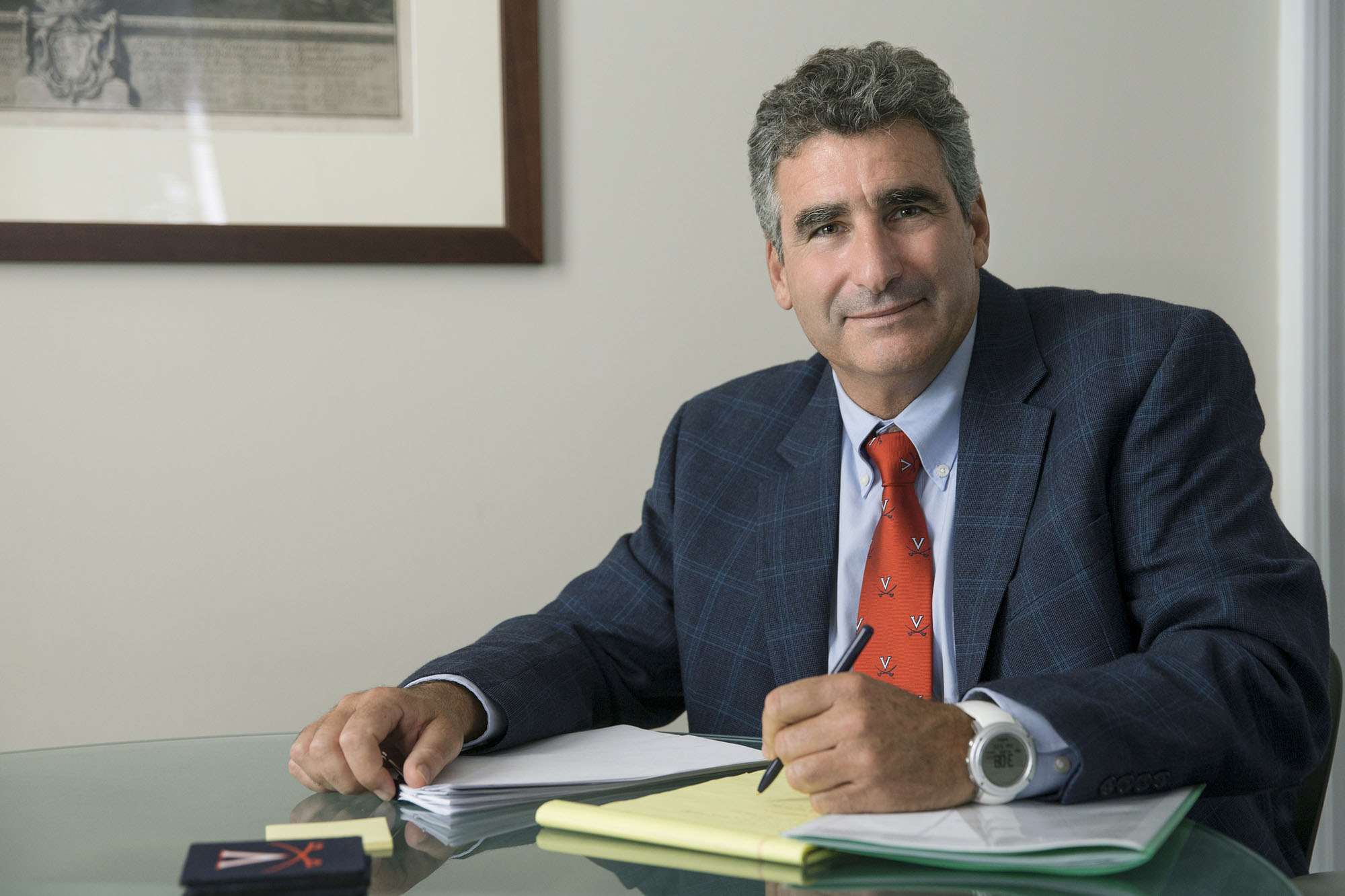The biggest, most important and challenging questions and problems society faces – in energy, public health, individual learning, resilience and others – cannot be solved within the constraints of any single discipline. Such challenges require broad thinking by broad-minded individuals who bring to bear a variety of backgrounds and areas of expertise.
To deal with major 21st-century issues, the University of Virginia is working to establish a handful of pan-University institutes intended to seek real solutions to real-world problems while also distinguishing the University. It is a strategy of the second pillar in the University’s Cornerstone Plan.
Last year, the University established the Data Science Institute as the first example. Now, Thomas C. Katsouleas, UVA’s executive vice president and provost, is leading an effort to identify and select the next institute. Eventually, there may be as many as five University-wide institutes, each of them bringing the intellectual capital of the University at large to deal with pressing big-picture issues.
“The special thing about being a Research I university is our strengths across multiple disciplines, where we bring together our vast resources to tackle the most important challenges we face as a society,” Katsouleas said. “By identifying just a few areas where we already have key people and initiatives in place, we can create these centers of knowledge, grow them and expand our boundaries.”
The pan-University institutes initiative will distinguish the University in a handful of key areas and establish its research and educational tone for the next decade and beyond, he said.
“We have many sweet spots for investment, real opportunities for research-focused joint activities with outstanding educational components,” he said.

Executive Vice President and Provost Thomas C. Katsouleas is leading the search for the next pan-University institute. (Photo by Dan Addison)
The next institute is expected to be similarly successful in its first year.
“We created a strong sense of momentum in the first year of implementation of the Cornerstone Plan,” UVA President Teresa A. Sullivan said. “Our challenge now is to sustain that momentum and build on it in the second year. By identifying our next pan-University research institute, and by continuing to pursue strategic priorities in other key areas, we will meet that challenge.”
Working closely with administrators, deans and the Faculty Senate, Katsouleas last month put out a call for letters of intent from groups and individuals who have ideas for the next institute, with a deadline of Nov. 16. A month later, after a team of expert reviewers from within and outside the University evaluates the ideas, Katsouleas will announce the finalists, who then will have two months to present fully detailed proposals. On May 1, Katsouleas will announce the next pan-University institute.
“We are eagerly awaiting the first round of ideas, and expect to be pleasantly surprised,” he said.
He suspects that proposals will encompass such areas as infectious disease, neuroscience, design thinking, energy, personalized learning and resilience.
“We likely will surface some great ideas that not only will lead to the next institute, but also may prove ripe for investment in other ways,” he said. “This is not just about picking a winner, but also about nurturing new collaboratives beyond the nascent stage. We’re working to bring people together.”
The initiative also will allow researchers to better compete for national multidisciplinary grants, he said. In the meantime, the University is identifying donors who will see the value of new investments in significant specialized but broad-scope areas.
“The institutes will play a key role in helping us to bring in some stellar people from a highly competitive hiring environment,” Katsouleas said. “This is an important initiative in our very ambitious hiring plan and the deans are very much in favor of cluster hires. A pan-U institute can be a big attractor for faculty candidates, allowing the most highly motivated people to become part of a research initiative that’s bigger than a single department or school.”
Katsouleas noted that the selection process for each institute is open and transparent and conducted in close collaboration with the Faculty Senate. He added that Faculty Senate Chair Dr. Nina Solenski and Gweneth West, co-chair of its planning committee, have been extremely helpful and enterprising throughout the process.
“Not many peer institutions have done this, bringing to bear the power of a whole university to tackle big challenges from several angles,” Katsouleas said. “If we do this well – and we will – it will be truly differentiating and distinguishing for our university.”
Media Contact
Article Information
November 10, 2015
/content/university-looking-next-big-issue-tackle

